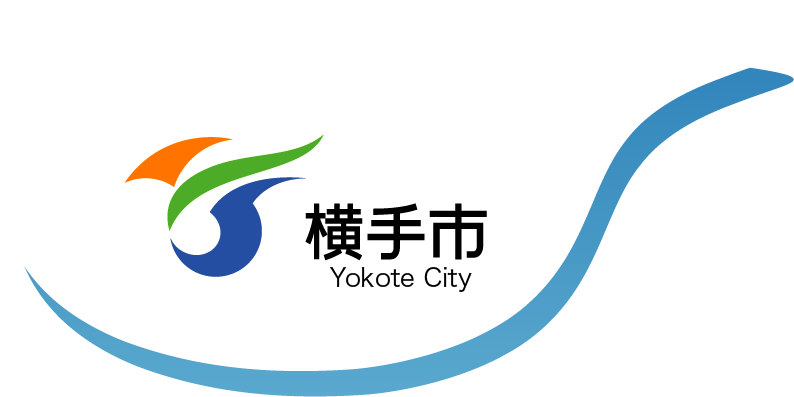Yokote’s Okuribon Festival
Yokote's Okuribon Festival
For over 300 years, Yokote’s Okuribon Festival has been held on August 15 and 16 as a
rite of remembrance and communion with the deceased. The festival is preceded by the
Nemuri Nagashi, an event in which local children carry straw boats decorated with
candles to the Yokote River. There on the riverbank, they play taiko drums and set out
floating lanterns. This practice is said to have originated as a way of dispelling
(nagashi) the drowsiness (nemuri) brought on by the summer heat, which would
otherwise leave the townsfolk open to attack by malevolent spirits. On August 15, the
townspeople gather for a traditional bon odori dance, followed on August 16 by the
Yakatabune Kuridashi. Large, straw-clad boats called yakatabune, which can weigh as
much as 800 kilograms, are taken down to the river, where a ceremony is held for the
spirits of the dead.
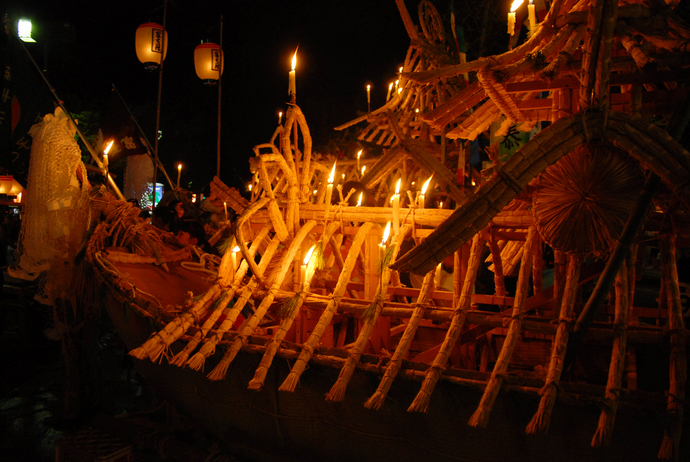
History of Okuribon
The summer festival of Obon, which is held throughout Japan, originated as a Buddhist
memorial service. Yokote’s version, the Okuribon Festival, started as a memorial
organized by the residents of the Yanagimachi neighborhood of Yokote during the Edo
period (1603–1867). During this period, the country was struck by three great famines
that led to a sharp increase in the cost of rice and the deaths of many hundreds of
thousands of people. In remembrance of the many souls lost during these famines, the
residents of Yanagimachi launched a straw boat down the Yokote River. Eventually,
other neighborhoods in the city began to build their own boats, and the practice
continues to this day in the form of the Yakatabune Kuridashi. The yakatabune are
arranged in the same location as the children’s smaller boats during the Nemuri
Nagashi, after which a Buddhist priest performs a spirit-sending-off ceremony (mitama-
okuri). Although the large boats are no longer sent down the river, the lights from the
small floating lanterns released during Nemuri Nagashi are reminiscent of the practices
of the Edo period.
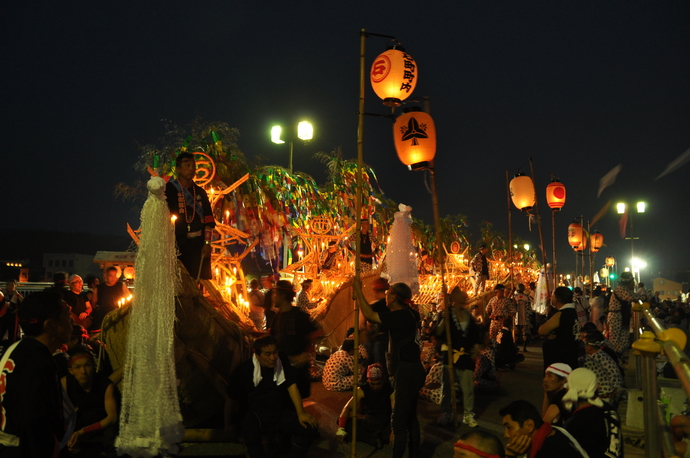
The Boat-Ramming (Butsuke-ai) Ceremony
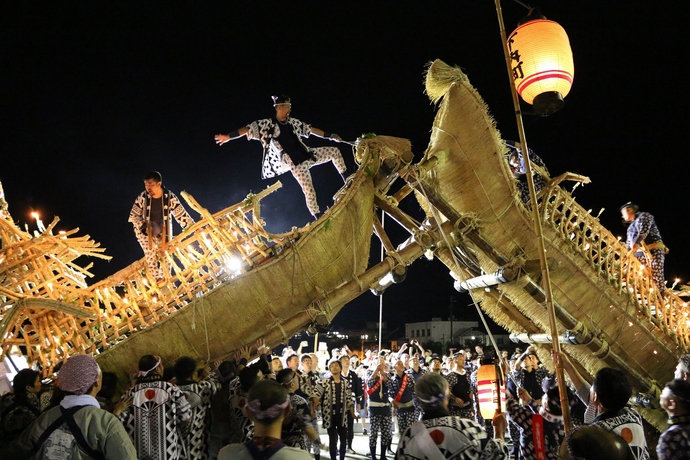
Each of the yakatabune that take part in the ceremony is prepared by the residents and
shopkeepers of a different neighborhood of Yokote. While the boat frames are reused
from previous festivals, every year the residents must fashion new straw hulls and
fittings, a process that takes up to a month. Each of the participating neighborhoods
builds a yakatabune, which must be carried from its home neighborhood to the dry
riverbed of the Yokote River. On August 15, the boats are lined up during the bon odori
so that visitors can see them up close. On August 16, the boats are pulled down to the
river for the sending-off ceremony. This is followed by the “boat-ramming” (butsuke-ai)
ceremony, which has become the highlight of the Okuribon Festival. The boats are
brought back to the bridge, where they square off in pairs and are rammed against each
other at the nose. Representatives from each neighborhood remain aboard the boats as
they smash together, shouting and waving as fireworks go off overhead.
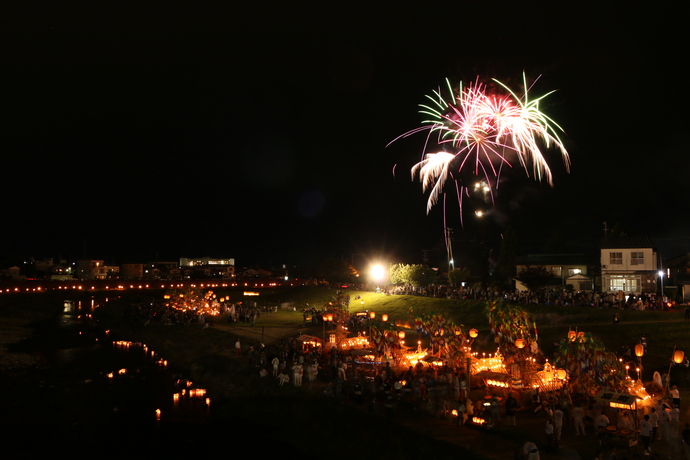
This English-language text was created by the Japan Tourism Agency.
このページに関するお問い合わせ
商工観光部観光おもてなし課観光企画係
〒013-8601 横手市中央町8番12号(かまくら館5階)
電話:0182-32-2118 ファクス:0182-36-0088
お問い合わせフォームは専用フォームをご利用ください。
